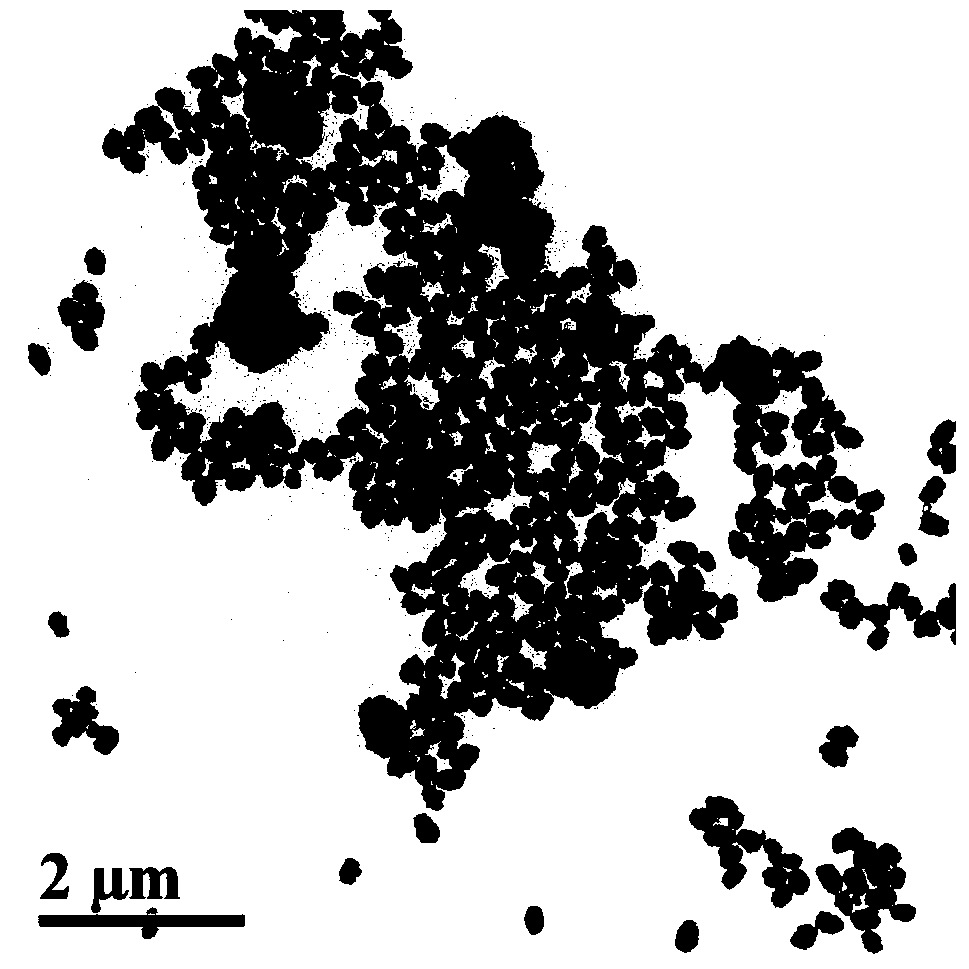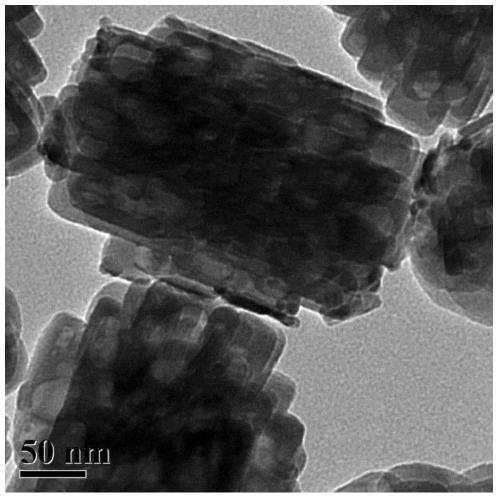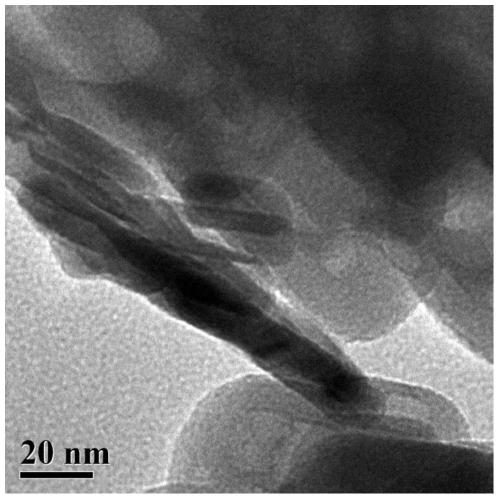Surface amphiphilic nanocomposite nickel cobalt iron sulfide catalyst and its preparation method and application
A nanocomposite, nickel-cobalt sulfide technology, applied in organic compound/hydride/coordination complex catalysts, physical/chemical process catalysts, chemical instruments and methods, etc., can solve the problem of increased operating costs, increased pre-dispersion during use, Dehydration and pre-sulfurization problems, to achieve good catalytic activity, good application prospects, good surface amphiphilic effect
- Summary
- Abstract
- Description
- Claims
- Application Information
AI Technical Summary
Problems solved by technology
Method used
Image
Examples
Embodiment 1
[0043] This example illustrates the method of using tetrabutylammonium bromide to prepare surface amphiphilic nanocomposite nickel-cobalt-iron sulfide hydrogenation catalyst.
[0044] Add a certain amount of nickel acetate, cobalt acetate, and ferric chloride to 500mL deionized water to make the concentration of nickel-cobalt-iron reach 0.5mol / L, nickel: cobalt: iron (molar ratio) = 1:3:2, stir until uniform Add ionic liquid tetrabutylammonium bromide to the above mixture, so that tetrabutylammonium bromide: (nickel+cobalt+iron) (molar ratio) reaches 0.5:1, stir until uniform; add ammonium sulfide to the above mixture Aqueous solution, so that ammonium sulfide: (nickel + cobalt + iron) (molar ratio) reaches 2:1, stir until uniform, react at 60°C for 6h, configure the initial reaction mixture; transfer the initial reaction mixture to the high-pressure synthesis kettle, and Crystallization at 120°C for 240h. After the crystallization is completed, the reactant is cooled to room...
Embodiment 2
[0047] This example illustrates the method of using 1-butyl-3-methylimidazolium hexafluorophosphate to prepare a surface amphiphilic nanocomposite nickel-iron sulfide hydrogenation catalyst.
[0048] Add a certain amount of nickel chloride and iron stearate to 500mL deionized water, so that the concentration of nickel + iron reaches 0.015mol / L, nickel: iron (molar ratio) = 3:1 and stir until uniform; add to the above mixture Ionic liquid 1-butyl-3-methylimidazolium hexafluorophosphate, make 1-butyl-3-methylimidazolium hexafluorophosphate: (nickel + iron) (molar ratio) reach 18:1, stir until uniform , add potassium sulfide aqueous solution to the above mixture, make potassium sulfide: (nickel+iron) (molar ratio) reach 4:1, stir until uniform, react at 40 ℃ for 24h, configure the initial reaction mixture; transfer the initial reaction mixture to In a high-pressure synthesis kettle, crystallize at 180°C for 10h. After the crystallization is completed, the reactant is cooled to r...
Embodiment 3
[0050] This example illustrates the method of using 1-propyl-3-methylimidazolium bromide salt to prepare surface amphiphilic nanocomposite cobalt-iron sulfide hydrogenation catalyst.
[0051] Add a certain amount of cobalt nitrate and ferric citrate to 500mL deionized water, so that the concentration of cobalt + iron reaches 0.5mol / L, cobalt: iron (molar ratio) = 1:3, stir until uniform; add ion Liquid 1-propyl-3-methylimidazolium bromide, make 1-propyl-3-methylimidazolium bromide: (cobalt + iron) (molar ratio) reach 0.01:1, stir until uniform; add to the above mixture Add hydrogen sulfide aqueous solution to make hydrogen sulfide: (cobalt + iron) (molar ratio) reach 2:1, stir until uniform, react at 50°C for 20 hours, and configure the initial reaction mixture; transfer the initial reaction mixture to a high-pressure synthesis kettle, Crystallized at 160°C for 40h. After the crystallization is completed, the reactant is cooled to room temperature, filtered, washed with deion...
PUM
 Login to View More
Login to View More Abstract
Description
Claims
Application Information
 Login to View More
Login to View More - Generate Ideas
- Intellectual Property
- Life Sciences
- Materials
- Tech Scout
- Unparalleled Data Quality
- Higher Quality Content
- 60% Fewer Hallucinations
Browse by: Latest US Patents, China's latest patents, Technical Efficacy Thesaurus, Application Domain, Technology Topic, Popular Technical Reports.
© 2025 PatSnap. All rights reserved.Legal|Privacy policy|Modern Slavery Act Transparency Statement|Sitemap|About US| Contact US: help@patsnap.com



